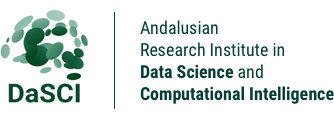UGR researchers create an autonomous AI problem generator capable of improving map applications and video game design.
13 November, 2024
In the field of artificial intelligence, automatic planning requires a number of specific problems to advance research and model development.
A research team from the DaSCI Institute and the UGR has created NeSIG, an innovative artificial intelligence methodology that revolutionises the way in which planning problems are generated, making it more accessible and efficient. This solution can be applied to robotics tasks, video game level generation, route planning like Google Maps or logistics problems in general, among other areas.
In the field of AI, automatic planning requires a series of specific problems to advance research and the development of robust models. To date, creating these problem sets has relied heavily on human designers or hand-programmed generators, which are costly and tedious processes.
Researchers Carlos Núñez, Pablo Mesejo and Juan Fernández have worked on this breakthrough. NeSIG, which stands for Neuro-Symbolic Instance Generator, is the first method designed to be domain-independent and capable of automatically creating valid, diverse and hard-to-solve planning problems for planned algorithms. It is based on the use of Deep Reinforcement Learning and the Markov Decision Processes framework, where NeSIG trains generative policies to create problems with desirable characteristics (validity, diversity and difficulty).
Benefits and results of NeSIG
Compared to manual, domain-specific generators, experiments show that NeSIG can generate problems with an average difficulty 15.5 times higher, while reducing the human workload. This automation capability is especially valuable in areas such as machine learning, where large amounts of quality training data are key to improving the performance and generalisation of learning models.
In addition, NeSIG is the first method as such that ‘learns’ to generate valid, diverse and hard-to-solve problems, so there is no other method to compare it to. ‘In general, machine learning models do not usually show generalisation capabilities to perform tasks of different sizes, with a different number of objects, as is the case with reinforcement learning algorithms. This opens a door to new applications in automatic planning, providing a steady stream of complex problems of different sizes, with minimal human intervention,’ explain the researchers.
Impact on the future of AI
The NeSIG proposal marks a paradigm shift in the field of planning problem generation and represents an important step towards complete independence from human designers in the creation of these scenarios. ‘With NeSIG, the future of automated planning becomes more promising, allowing researchers and practitioners to focus on improving algorithms and exploring new applications of artificial intelligence. Some possible applications are data generation for training models, comparing the performance of different algorithms, reinforcement learning, adversarial problem generation, scenario simulation, etc.,’ add the research team.
The Andalusian Inter-University Institute in Data Science and Computational Intelligence, known as DaSCI, is a collaborative entity between the universities of Granada, Jaén and Córdoba. It is dedicated to advanced research and training in the field of artificial intelligence, with a particular focus on data science and computational intelligence. The institute brings together an outstanding group of researchers working on joint projects, promoting the development and application of innovative technologies in various sectors. With the aim of becoming a benchmark in its field, the DaSCI promotes the transfer of scientific knowledge to the socio-economic environment, thus contributing to technological progress and the digitisation of industry. https://dasci.es/es/
Bibliographic reference:
Carlos Núñez-Molina, Pablo Mesejo y Juan Fernández-Olivares. «NeSIG: A Neuro-Symbolic Method for Learning to Generate Planning Problems». En ECAI 2024, 4084-91. IOS Press, 2024. https://doi.org/10.3233/FAIA240978
Contact:
- Carlos Nuñez Molina – ccaarlos@ugr.es
- Pablo Mesejo Santiago – pmesejo@ugr.es
- Juan Fernández Olivares – faro@decsai.ugr.es





